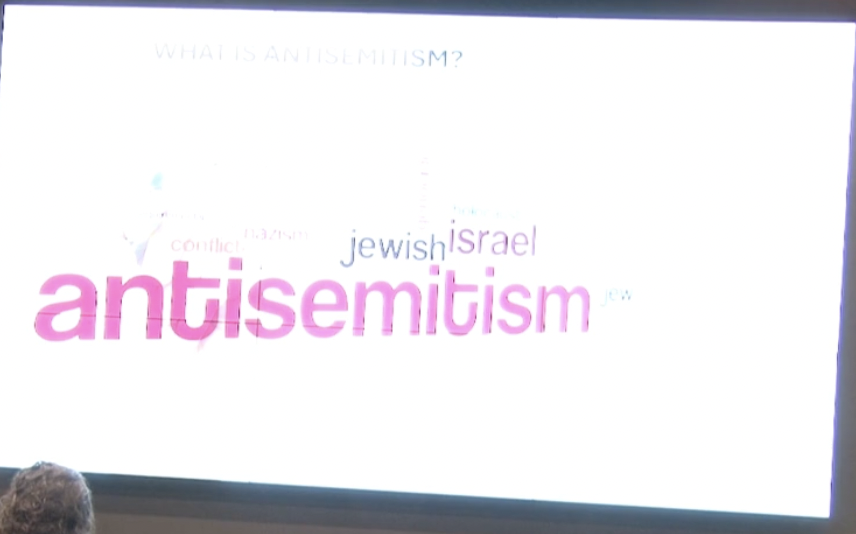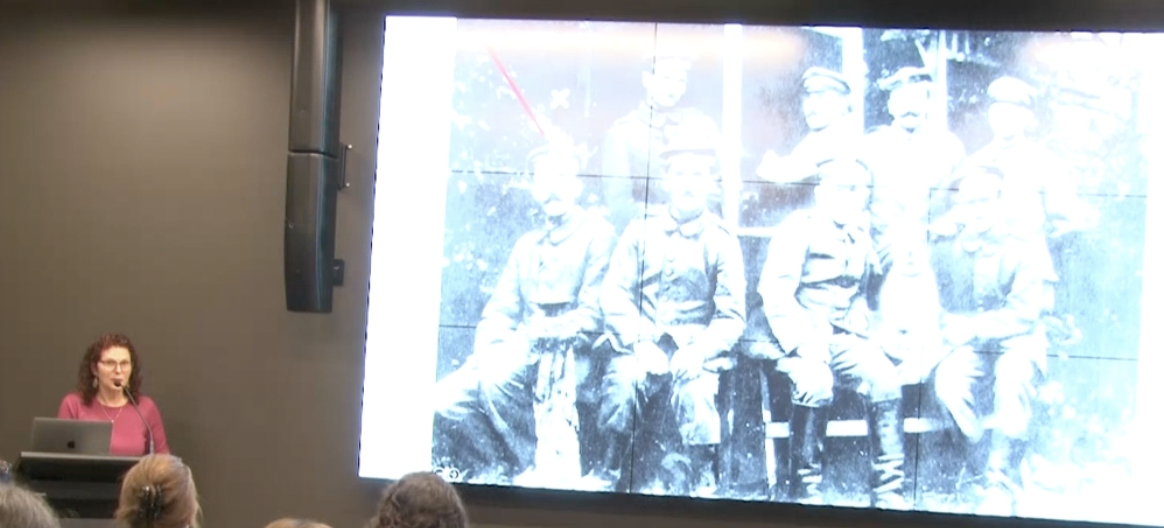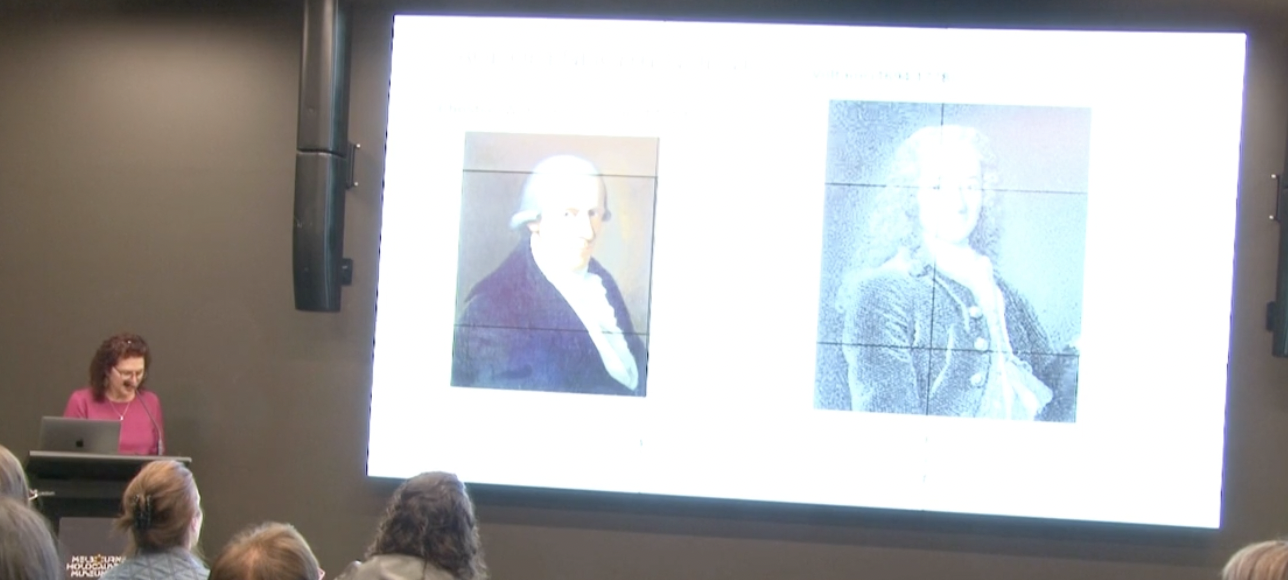Last Sunday, while gripping my coffee and eyeing the precariously placed recording camera at the back of our lecture hall, I couldn’t help thinking about how much has changed in how we record, remember, and discuss history. But some things—like the persistence of antisemitism—just don’t fade with passing trends or new gadgets. From ancient whispers to livestreamed advocacy, this ancient hostility mutates, refusing to be boxed in. Let’s step through time (watch your step near the camera) and see how this story weaves, unravels, then knots up all over again, generation after generation.
1. Antisemitism 101: Definitions, Frameworks, and a Dose of Tea
If you’ve ever tried to pin down exactly what “antisemitism” means, you know it’s not as simple as it sounds. The Antisemitism definition is a topic that sparks debate in classrooms, government meetings, and even over tea and biscuits. Why does it matter so much? Because without a clear definition, it’s hard to know what counts as antisemitism—and what doesn’t.
Let’s start with a scene: Imagine a group gathered for a discussion on antisemitism. The conversation is lively, but the mood is light—tea is poured, biscuits are passed around. For a moment, it feels like the topic might drift away entirely. Then someone brings up the IHRA working definition, and suddenly, everyone is paying attention. The room shifts. The debate gets real.
The Importance (and Complication) of Defining Antisemitism
Why is a definition so important? In schools, universities, and public life, people need to know what antisemitism looks like to challenge it. But defining it isn’t straightforward. As research shows, antisemitism is hostility, prejudice, or discrimination against Jews. It’s rooted in history—sometimes religious, sometimes racial, sometimes political. But in practice, what counts? Is a comment about Israel antisemitic? What about a stereotype in a joke?
The IHRA Working Definition: What Is It?
This is where the IHRA working definition comes in. Developed with input from 35 countries, the IHRA definition adoption is a consensus-driven process. It’s not legally binding, but it’s influential. Jillian Segal, the Australian envoy for antisemitism, is a strong advocate for its use in government, education, and business. The IHRA definition states:
“Antisemitism is a certain perception of Jews which may be expressed as hatred toward Jews.”
It goes further, offering practical examples—rhetorical and physical acts, targeting Jewish individuals, property, community institutions, or religious facilities. The goal? To give schools and organizations a framework for recognizing antisemitism when they see it.
Debate and Dilemmas: The Israel Question
But even with a framework, things get tricky. As Professor Andrew Marcus and others point out, the definition stirs debate, especially around Israel. Some say it’s too broad. Others worry it could limit free speech. In universities, students and staff sometimes argue over whether criticism of Israel is antisemitic or not. The IHRA provides examples, but real-life situations are rarely black and white.
Can a Definition Capture What People Feel?
Here’s the wild card: Can any definition, no matter how detailed, really capture what people feel in the moment? Antisemitism isn’t just about words or actions—it’s about perceptions, history, and emotion. As Jean Paul Sartre once said:
“If a Jew can exist, the anti-Semite would invent him.”
So, while the IHRA working definition and its adoption by countries like Australia (thanks to advocates like Jillian Segal envoy) are steps forward, the conversation is far from over. The need for clear, practical antisemitism definitions examples remains, but so does the challenge of capturing the full reality of antisemitism—past and present.

2. From Ancient Mistrust to Medieval Myths: Roots of Hostility
When you look back at the historical roots of antisemitism, it’s easy to assume it began in modern times, but the reality is much older and more complex. The story starts in the ancient world, long before the term “antisemitism” was even coined in 1879. Jews, as monotheists—believers in one invisible Elohim—stood out in a world where most people worshipped many gods. This difference might seem small today, but in ancient societies, religious beliefs shaped everything from politics to daily routines.
Imagine living in a village where everyone shares the same customs, except for one group. The Jews refused to worship the gods of their conquerors, even after defeat. In a time when the victors’ gods were expected to be adopted by the defeated, this stubbornness was seen as defiance. As a result, Jews were often viewed with suspicion, accused of being disloyal or even dangerous. This wasn’t yet the antisemitism we recognize today, but rather a form of anti-Judaism—hostility rooted in religious difference.
The historical development of antisemitism took a sharp turn with the rise of Christianity. After the destruction of the Jerusalem Temple in 70 CE, tensions between Jews and early Christians grew. One of the most damaging ideas to emerge was the charge of deicide—the accusation that Jews were responsible for the death of Jesus. The Gospel of Matthew records the infamous line:
“His blood be on us and on our children.”This idea embedded a collective blame that would echo for centuries. Shockingly, the Catholic Church did not officially repudiate this charge until 1963, with the declaration of Nostra Aetate.
As you move into the Middle Ages, the hostility and prejudice against Jews intensified and took on new forms. Picture a village debate club, but with a cruel twist: Jews were forced into public disputations, often against converts who knew Jewish law inside out. The outcome was almost always predetermined. If the Jewish side “lost,” the entire community could be forced to convert—or face even worse consequences.
Medieval myths and accusations flourished. Jews were blamed for “blood libel”—the false claim that they kidnapped Christian children for ritual murder. They were accused of “host desecration,” supposedly sneaking into churches to desecrate the sacred wafer. These stories were pure fantasy, but they fueled real violence and expulsions. Jews were also made to wear distinctive badges or hats, marking them as outsiders wherever they went.
Even influential figures like Martin Luther, who initially hoped for Jewish conversion, turned to fierce hatred when those hopes were dashed. His writings included statements like:
“Their synagogue should be set on fire...”Such rhetoric would later inspire even more destructive forms of antisemitism, including those seen in Nazi Germany.
Research shows that the historical roots of antisemitism are layered and persistent, evolving from ancient religious suspicion to the deeply entrenched myths and legal codes of the Middle Ages. Understanding these origins is key to recognizing how antisemitism, in its many forms, has shaped history and continues to impact society today.

3. Antisemitism Evolves: Enlightenment, Science, and the Dark Side of Reason
When you look at the history of antisemitism, you see a dramatic shift during the 18th and 19th centuries. Before this era, antisemitism was mostly religious. If Jews converted to Christianity, they could often escape persecution. But with the rise of the Enlightenment and the so-called “age of reason,” things changed. Instead of being judged by their faith, Jews were now seen as different by blood—a shift that would have devastating consequences.
Enlightenment thinkers promised more inclusion and rights for Jews, but the reality was more complicated. Yes, there were new freedoms, but there were also new forms of exclusion. Scientific racism antisemitism began to take hold. This meant that even if a Jew converted, it didn’t matter—now, their supposed “race” marked them as outsiders. The term antisemitism itself was coined in 1879 by Wilhelm Marr, reflecting this new, pseudo-scientific hostility and prejudice against Jews.
Imagine picking up a newspaper in the late 19th century and seeing a headline like, “Jewish Bankers Control the World!” These kinds of Jewish stereotypes antisemitism didn’t just appear out of thin air. They gained credibility through misuse of science and pseudo-academic theories. Suddenly, old myths were dressed up in the language of biology and anthropology, making them seem more legitimate to the public. This is a classic example of how antisemitism definitions and examples evolved—shifting from religious hostility to claims rooted in “science.”
One of the most chilling connections in this history is how earlier religious antisemitism fueled later, more deadly forms. Martin Luther, a key figure in the Protestant Reformation, started out hoping to convert Jews. When that didn’t happen, his disappointment turned to hatred. He called for their synagogues and homes to be destroyed. Centuries later, Adolf Hitler would cite Luther as a direct inspiration, writing in 1924:
“Martin Luther has been the greatest encouragement of my life.” — Adolf Hitler, 1924
This link between theological antisemitism and Nazi propaganda antisemitism is crucial. Nazi ideology took the old religious prejudices and combined them with scientific racism antisemitism, creating a toxic new form. Nazi propaganda played a central role in spreading these ideas, using stereotypes and pseudo-science to justify persecution and, eventually, genocide.
Even efforts at assimilation couldn’t protect Jews. Take the German poet Heinrich Heine, who converted to Christianity in 1825, calling his baptism certificate a “ticket to European civilization.” For a while, it seemed like a way in. But as racial antisemitism grew, even converted Jews found themselves locked out. The rules had changed—now, it was about blood, not belief.
Research shows that these shifts in antisemitism definitions and examples—moving from faith-based to scientific and racial forms—laid the groundwork for some of the darkest chapters in modern history. The legacy of scientific racism antisemitism and Nazi propaganda antisemitism continues to shape how we understand hostility, prejudice, and discrimination against Jews today.

4. Today’s Contorted Landscape: Modernity, Media, and Misunderstandings
If you look at antisemitism in modern society, you’ll notice it never really disappears—it just changes its appearance. What once showed up in pamphlets or street rallies now slips into your social media feed, campus debates, and even political speeches. The forms may be new, but the core prejudice is old. You might think this is a problem of the past, but research shows the impact is felt today, and it makes absolutely no difference whether it’s post-Holocaust or present—antisemitism doesn’t really need a reason.
Let’s take a closer look at how these old biases persist in new ways. Consider Montana Tucker, a dancer, singer, and actress with over 3 million followers. She’s not just a performer—she’s also the granddaughter of Holocaust survivors and a passionate advocate for Israel. Tucker uses her platform to share her family’s Holocaust legacy, bringing survivor stories to a new generation. Her advocacy is a powerful example of how antisemitism advocacy for Israel can reach millions, especially young people who might not otherwise engage with these stories.
But the conversation doesn’t stop with personal stories. In today’s world, the lines around antisemitism are often blurred, especially when it comes to criticism of Israel. This is where the IHRA working definition comes into play. The International Holocaust Remembrance Alliance (IHRA) offers a widely adopted framework to help identify antisemitic acts and rhetoric. However, debates rage on: Is criticism of Israel always antisemitism, or is there a line? The subjectivity in these definitions breeds more debate, especially in academic and political circles. Jillian Segal, a prominent envoy and advocate, has recommended adopting the IHRA working definition in Australian institutions, highlighting the ongoing need for clear guidelines.
You might have noticed that accusations of antisemitism are sometimes used as political weapons, especially in heated debates about Israel and the Middle East. This double standard can make it hard to distinguish genuine criticism from prejudice. As a result, legal and social systems often struggle to keep up with the shifting landscape. The rise of online hate only adds to the complexity, as new frameworks for recognition and response are constantly being proposed and tested.
There’s an almost comic awkwardness to the way people try to “navigate” these conversations today. Imagine someone trying to walk between a camera and a wall during a live broadcast—they hesitate, unsure of where to step, worried about tripping up or blocking the view. That’s what it’s like to talk about antisemitism in modern society: everyone’s cautious, afraid of saying the wrong thing, but the conversation needs to keep moving forward.
The impact is felt today, and it makes absolutely no difference whether it’s post-Holocaust or present – antisemitism doesn’t really need a reason.
As you can see, the landscape is complicated. Figures like Montana Tucker and Jillian Segal show how advocacy can bridge generations, but the challenges of defining and confronting antisemitism in modern society remain as tangled as ever.

5. Never Just in the Past: Keeping Watch and Pushing Back
When you look at the history of antisemitism, it’s easy to think of it as a subject for textbooks or old documentaries. But the truth is, understanding these histories isn’t just homework—it’s armor for the present. Antisemitism, as research shows, doesn’t simply fade away. It changes shape, finds new ways to spread, and adapts to the times. That’s why vigilance against antisemitism is not just a lesson from the past, but a daily responsibility for all of us.
Think about the Enlightenment, for example. It was a time of new ideas and progress, but even then, old prejudices didn’t vanish. Instead, they found new forms. This is a pattern you’ll see again and again: antisemitism morphs, but it never disappears. So, why does this matter to you now? Because every time you learn about these patterns, you’re better prepared to spot them when they show up in your own world—maybe in a meme, a joke, or a news story that doesn’t quite sit right.
That’s where practical vigilance comes in. Definitions, like the IHRA working definition of antisemitism, give us tools to recognize and talk about antisemitism today. They aren’t perfect, but they help us identify trends and trigger public responses when hate rears its head. If you’ve ever wondered why we need these definitions, consider this: without clear examples and language, it’s all too easy for old myths to slip by unnoticed, especially as they mutate and adapt in online spaces.
Education is key here. Whether it’s a live lecture, a classroom discussion, or an online platform, new methods make it harder to ignore old problems. Imagine a world where every student learns to spot antisemitic myths—like the blood libel or financial conspiracy theories—when they pop up in new forms. How fast would hate unravel if we all had that skill? It’s a wild card scenario, but not impossible. It starts with you, with each of us, keeping our eyes open and our minds sharp.
But vigilance isn’t just about knowing the facts. It’s about seeing—really seeing—the full picture. Are we giving antisemitism too many blind spots? Sometimes, yes. If we only look for it in the obvious places, we miss the subtle ways it hides and spreads. That’s why critical thinking, media literacy, and open conversations matter so much. They help us catch the shadows as well as the shapes.
"Understanding is the first guardrail against the next wave of hatred."
In the end, the historical survey of antisemitism isn’t just for historians. It’s for anyone who wants to build a more just, inclusive society. By keeping watch, pushing back, and sharpening our tools of empathy and analysis, we make it harder for hate to hide. The past is never just in the past—it’s a lens, and it’s up to you to keep it focused.
TL;DR: Antisemitism morphs but never disappears: understanding its roots and modern forms is essential to building a more just society. Definitions like IHRA’s and honest, critical discussion help us stay vigilant, challenge old stereotypes, and foster real inclusivity.
Appreciation for Melbourne Holocaust Museum Presented by: Sue Campbell Recorded on: July 30, 2025 Available on: Vimeo Watch here: https://vimeo.com/1105648442 License: Creative Commons – Attribution (reuse allowed with appropriate credit) for the valuable insights shared.



